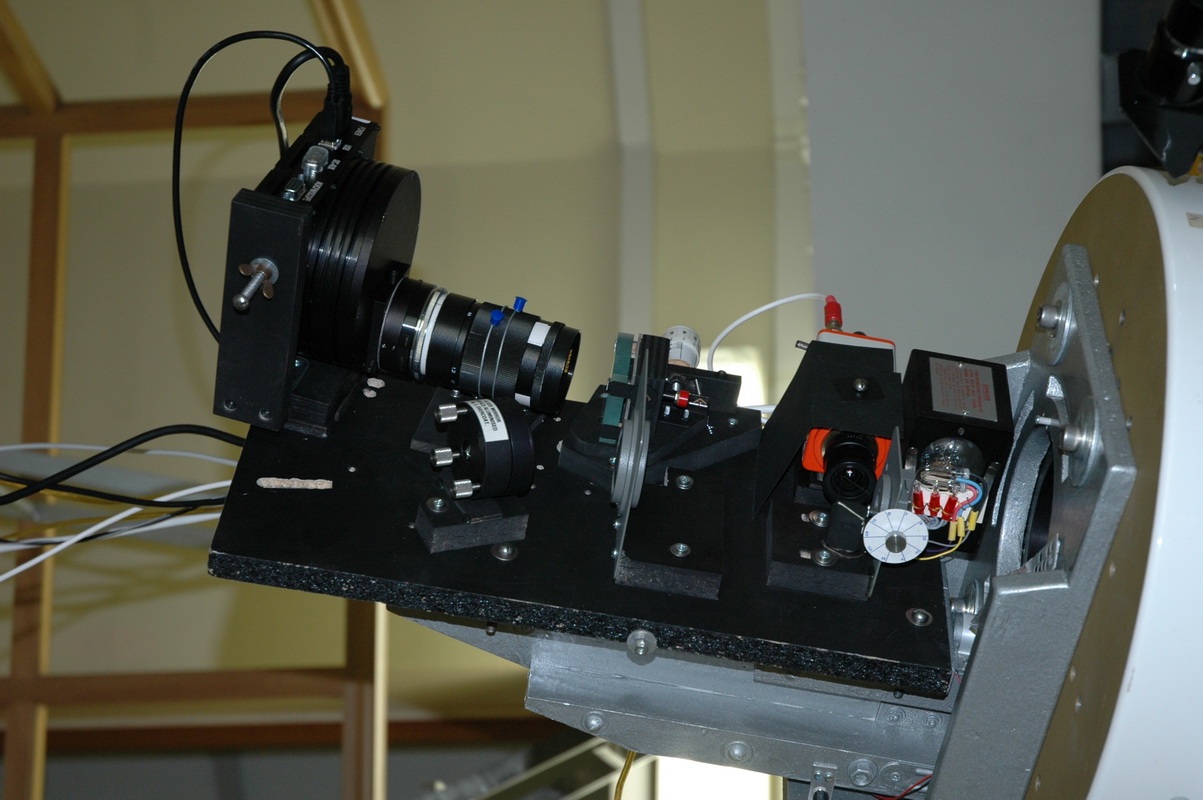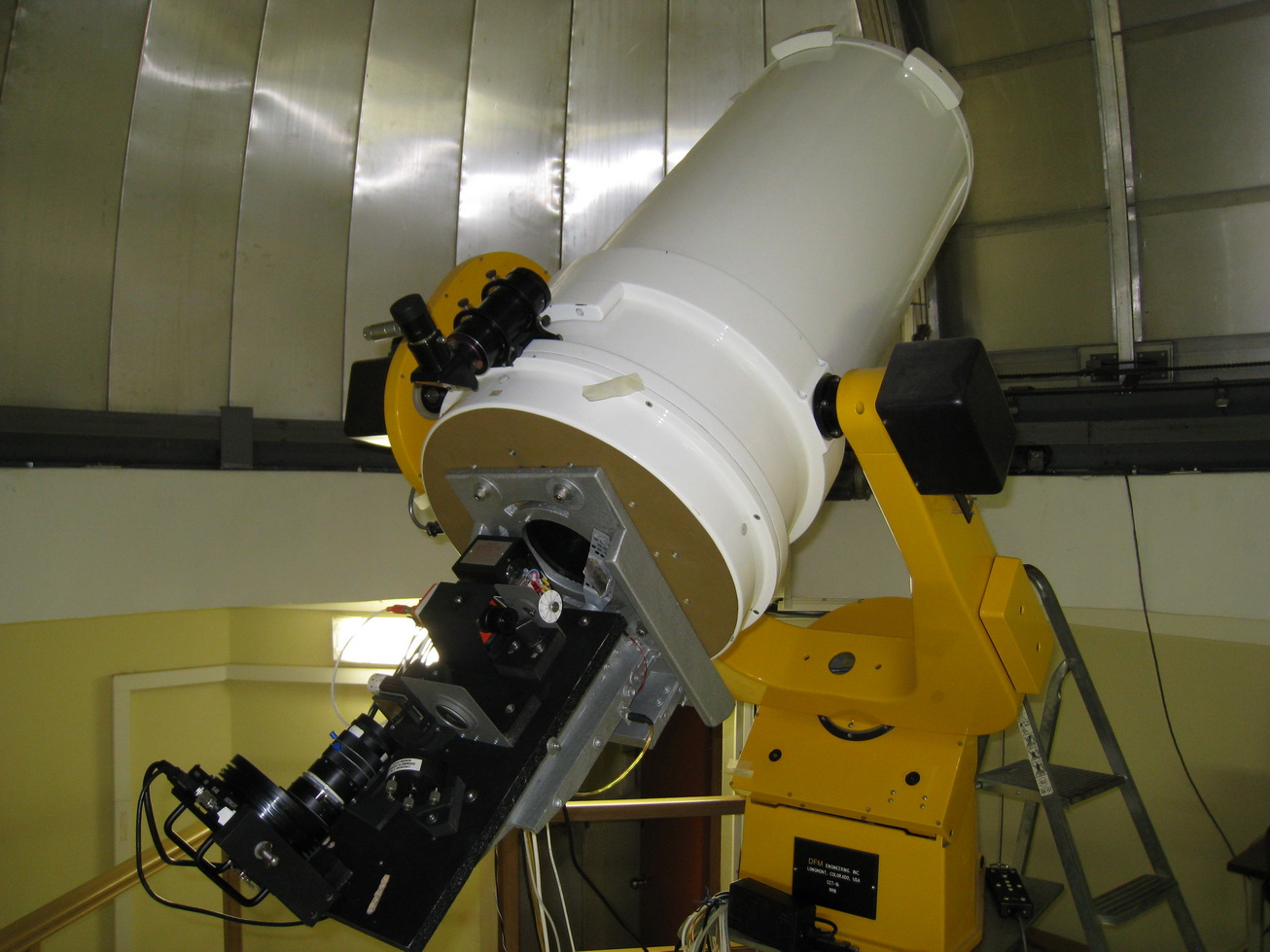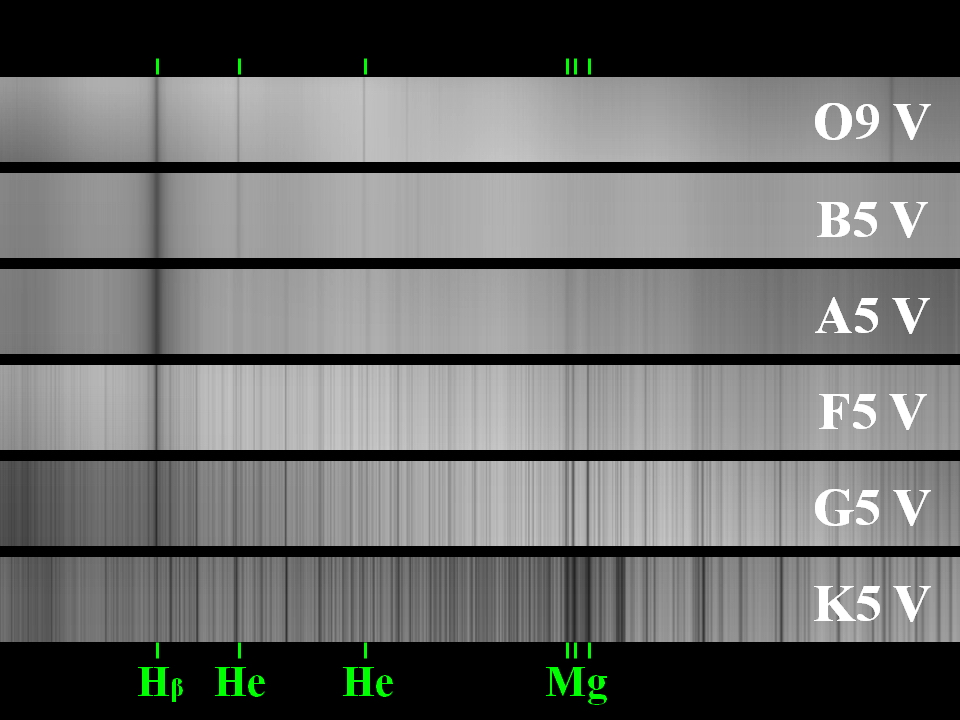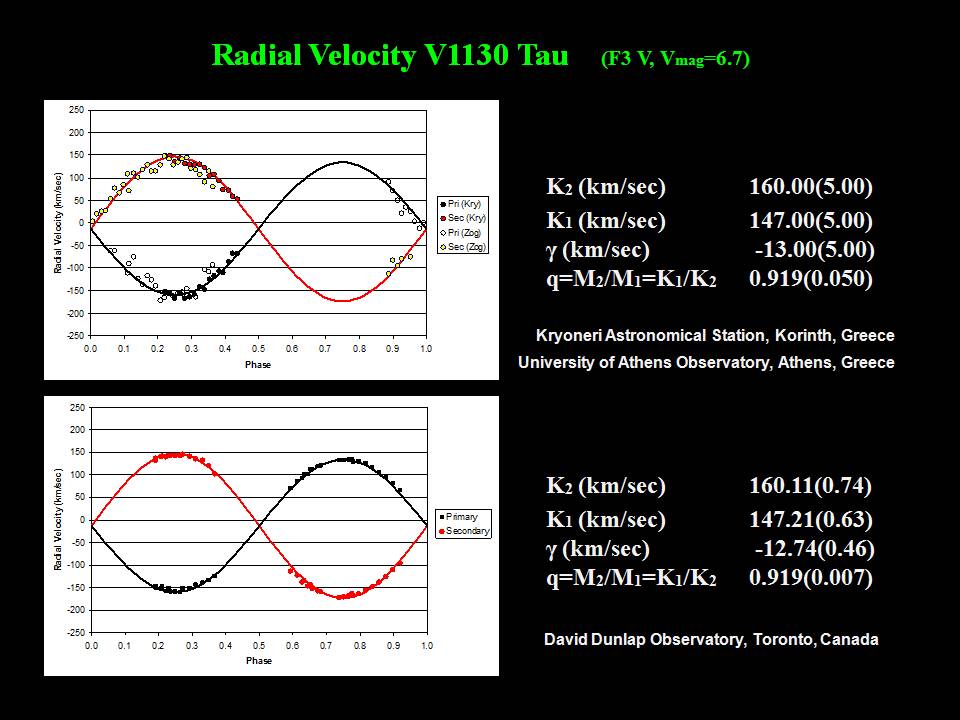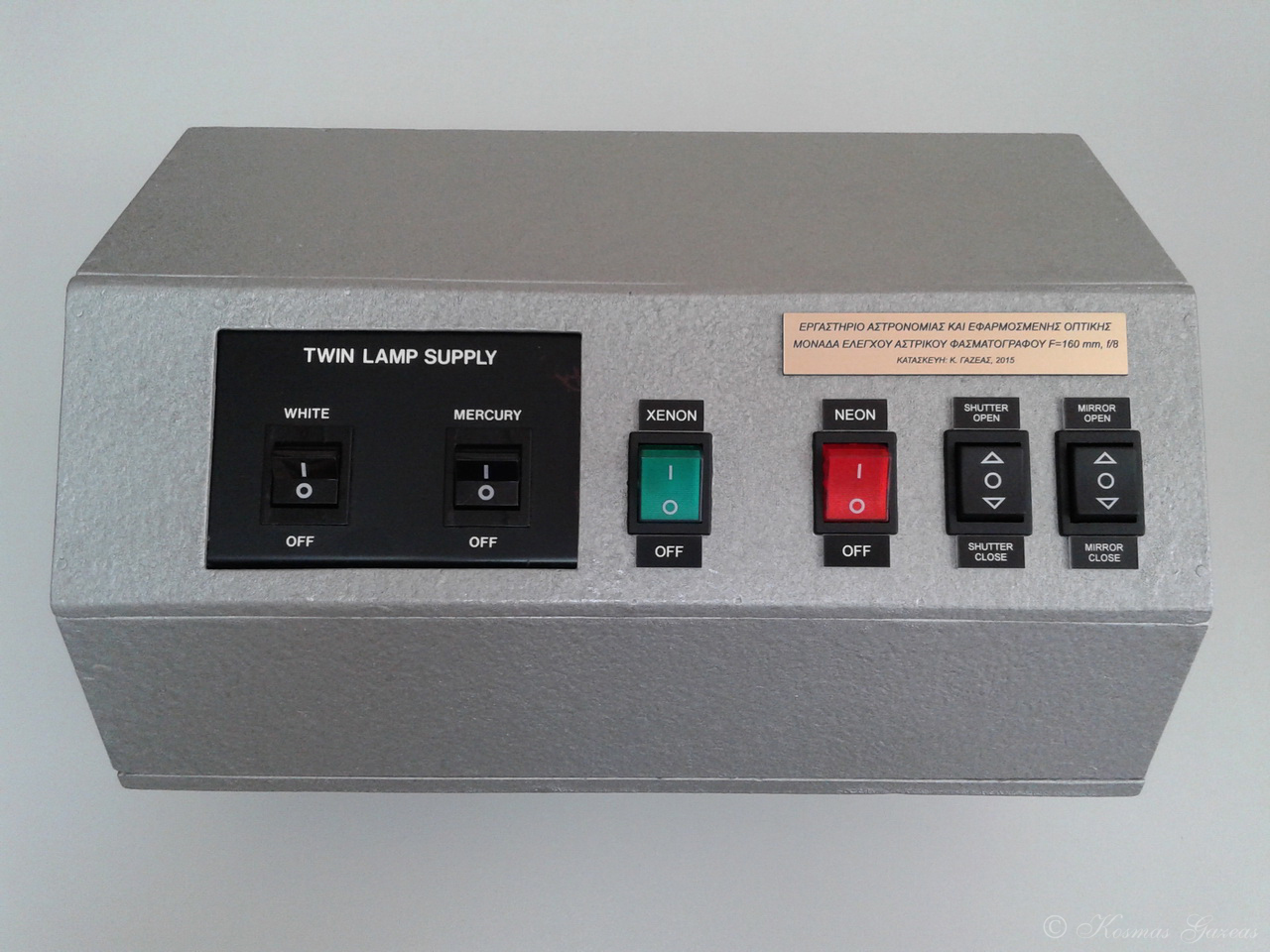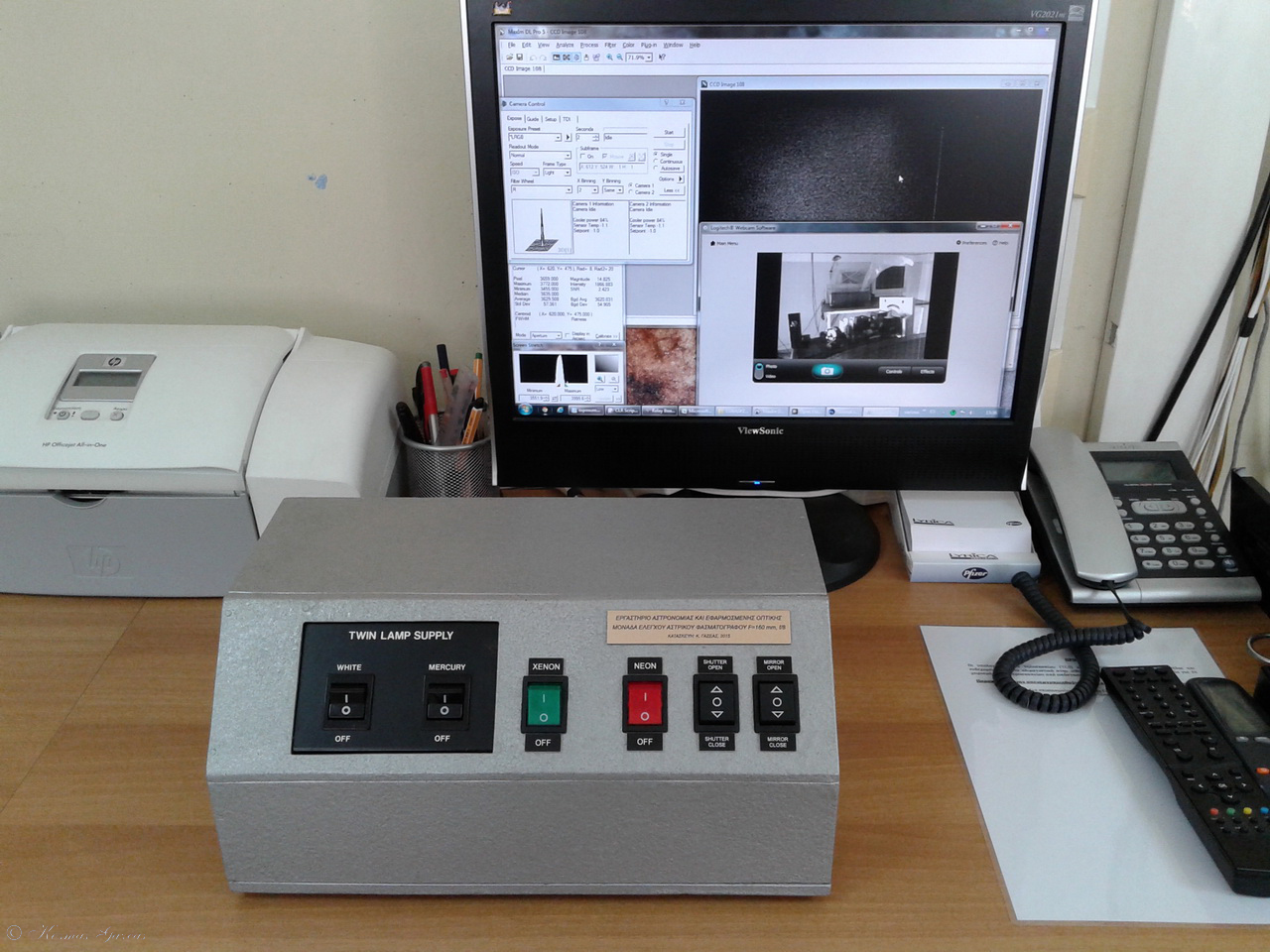Spectrographs
In July 2006 a Medium-Resolution Stellar Spectrograph (UOAO-MRS) has been constructed at the Laboratory of Astronomy and Applied Optics of the University of Athens by Prof. D. Papathanassoglou and Dr. K. Gazeas. The instrument was initially built for laboratory applications and later was modified for astronomical use. The spectrograph was mounted on the telescope at the Athens University Observatory, as well as on the telescope at the Kryoneri Astronomical Station in Korinth, Greece. The installation of the stellar spectrograph on the telescope of the University of Athens Observatory in 22 July 2006 was successful, despite the heavy light pollution, and is characterized as the beginning of a new era of spectroscopic observations from an observatory in Athens. It can be used for spectral classification of stars brighter than 9 mag, for studies of fast rotating stars and for the detection and verification of binary stars among single ones.
Medium-Resolution Stellar Spectrograph (UOAO-MRS) Specifications
As calibration sources were selected three discharge lamps of Hg, Ne and Xe, which were placed before the slit. In order to take a calibration frame, a motorized diffuse reflector, takes place in front of the slit and sends the calibration light into it. An incandescent bulb was also placed in front of the discharge lamps in order to correct the spectra from "flat fields" and for testing also the efficiency of the spectrograph in all wavelengths.
A sample of stellar spectra obtained with the new stellar spectrograph, is shown below. The sample covers a wide range of magnitudes (up to 9 mag) and spectral types (from O to M). High S/N ratio spectra of bright stars (∼2-3 mag) are easily achieved with ∼60 sec exposure, while fainter targets (fainter than 7 mag) need 30-40 min.
After its original construction and installation on the 0.40 m telescope at the University of Athens Observatory in July 2006 and its subsequent modifications, extensive tests and observations confirm that, high quality spectra can be obtained, offering new opportunities for stellar astrophysics in Greece. In January 2009 the modified spectrograph was mounted on the 1.22 m telescope at the Kryoneri Astronomical Station as a visiting instrument. The first spectroscopic observations ever taken with this telescope from the time of its installation in 1975 showed that the instrument was able to perform radial velocity measurements on binary stellar systems with an accuracy of 5 km/s. The focal ratio of the telescope was modified to f/8 (from its original f/13) with the use of a focal reducer.
A spectroscopic program towards a complete atlas of spectroscopic standards initiated in 2008 at the University of Athens Observatory. This program was later modified in 2014 as the main research project of an undergraduate diploma thesis. This work aims towards the extension of instrumental capabilities, in terms of software development and automation techniques. The ultimate goal of this study is to create a large database of spectroscopic standard stars in the entire range of luminosity classes and spectral types.
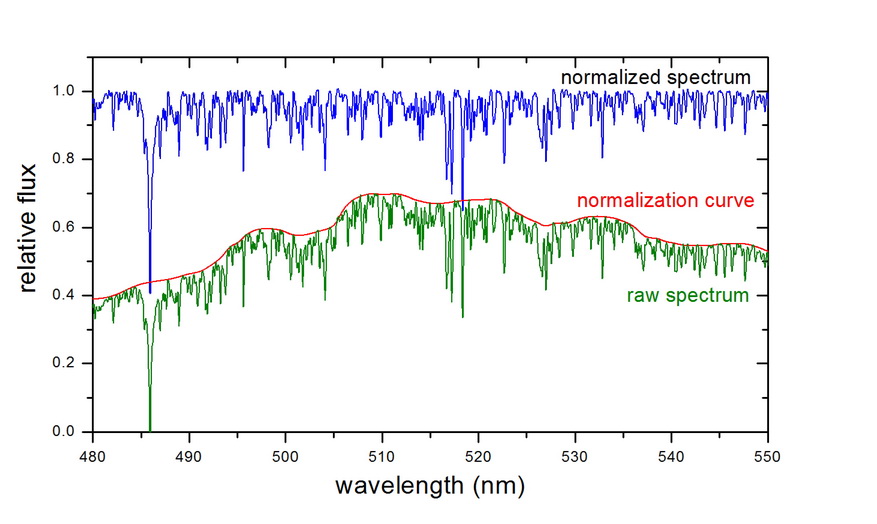 Sample of spectra before and after the automatic processing, normalization and calibration, with the specially developed reduction code (credits: L. Tzouganatos).
Sample of spectra before and after the automatic processing, normalization and calibration, with the specially developed reduction code (credits: L. Tzouganatos).
In September 2015 the new Spectrograph Control System (SCS) for the UOAO-MRS was built. All switches, power supply modules, cables and connectors used during spectroscopic observations are now mounted on a single control board.
In addition, the autoguider module was altered, as it was mounted infront of the slit, taking signal with a beam splitter (BS) placed before the spectrograph. The analog camera located after the slit is now taking direct signal, with the use of a rotaing mirror, which is displaced when the spectrograph is operating. All the above modifications were successfully tested in November 2015. After these modifications the stellar spectrograph can reach a magnitude limit of 9 mag with a 40 cm f/8 telescope with a resolution of R=10000, resulting in a good S/N ratio with a 30 min exposure.
